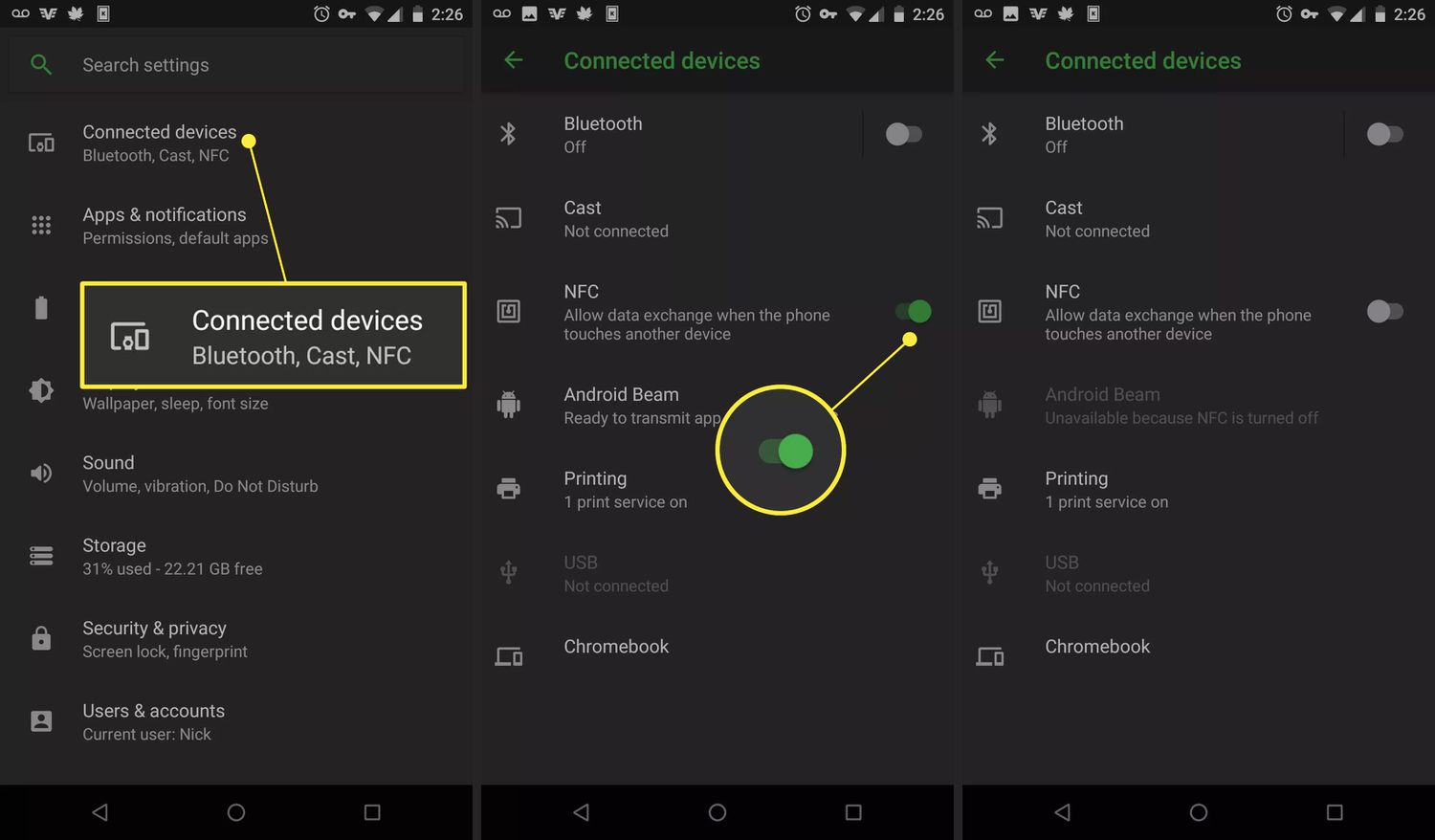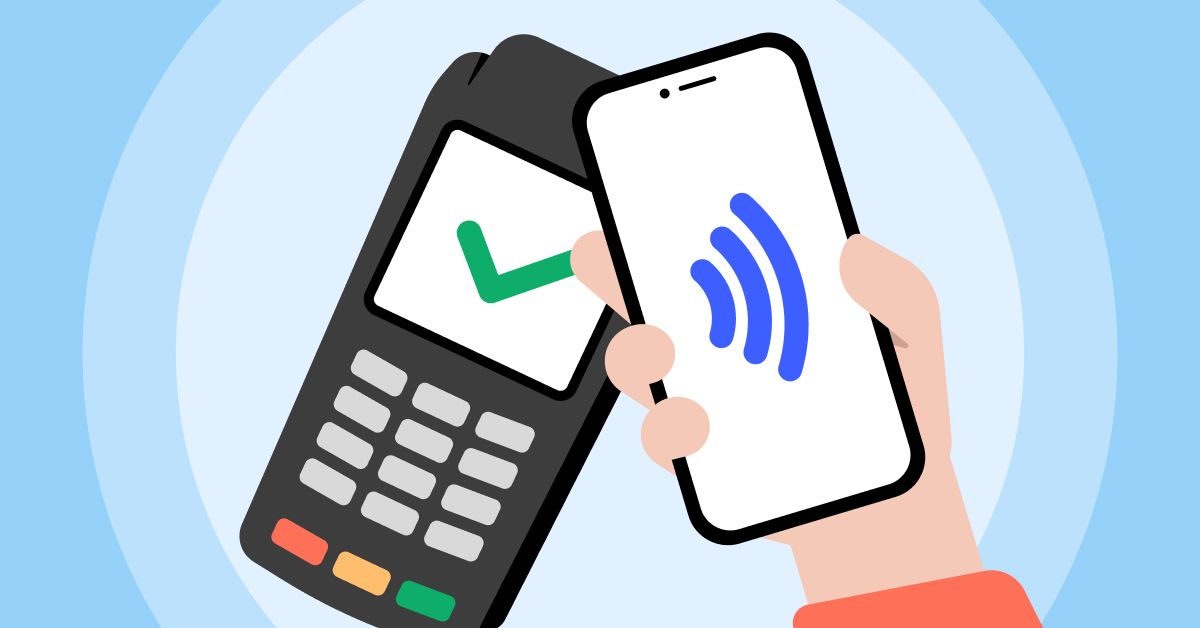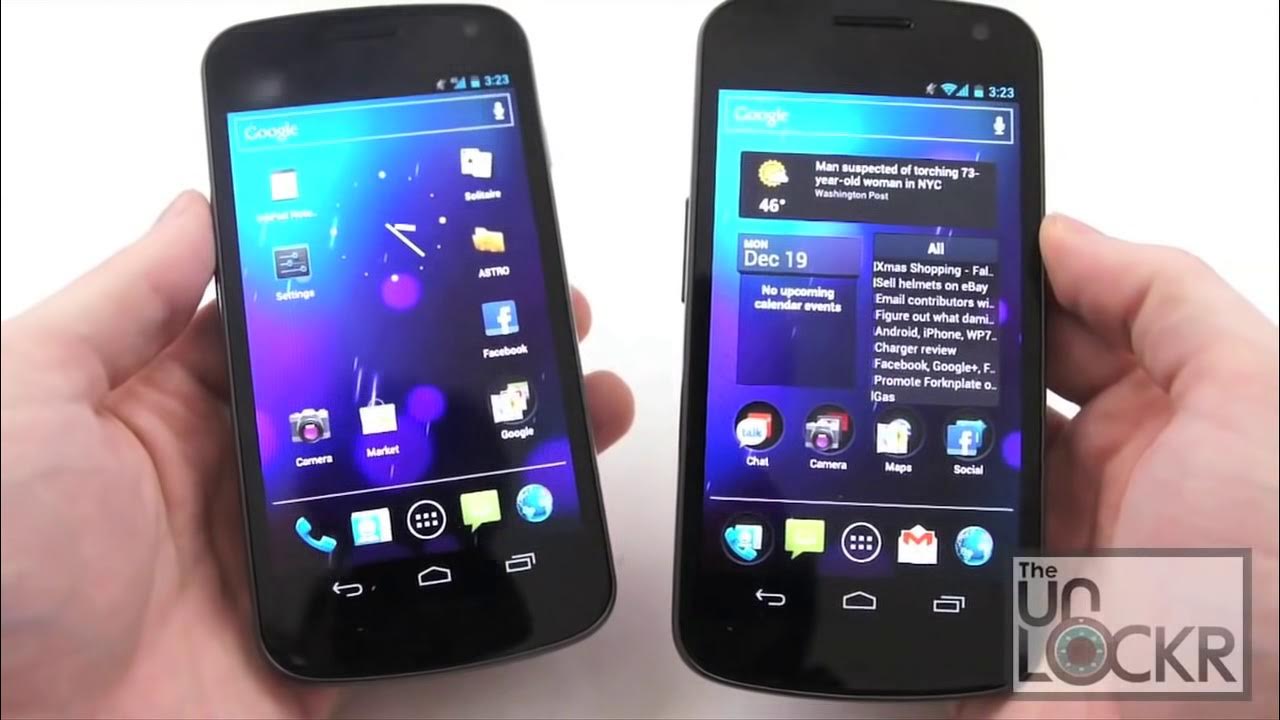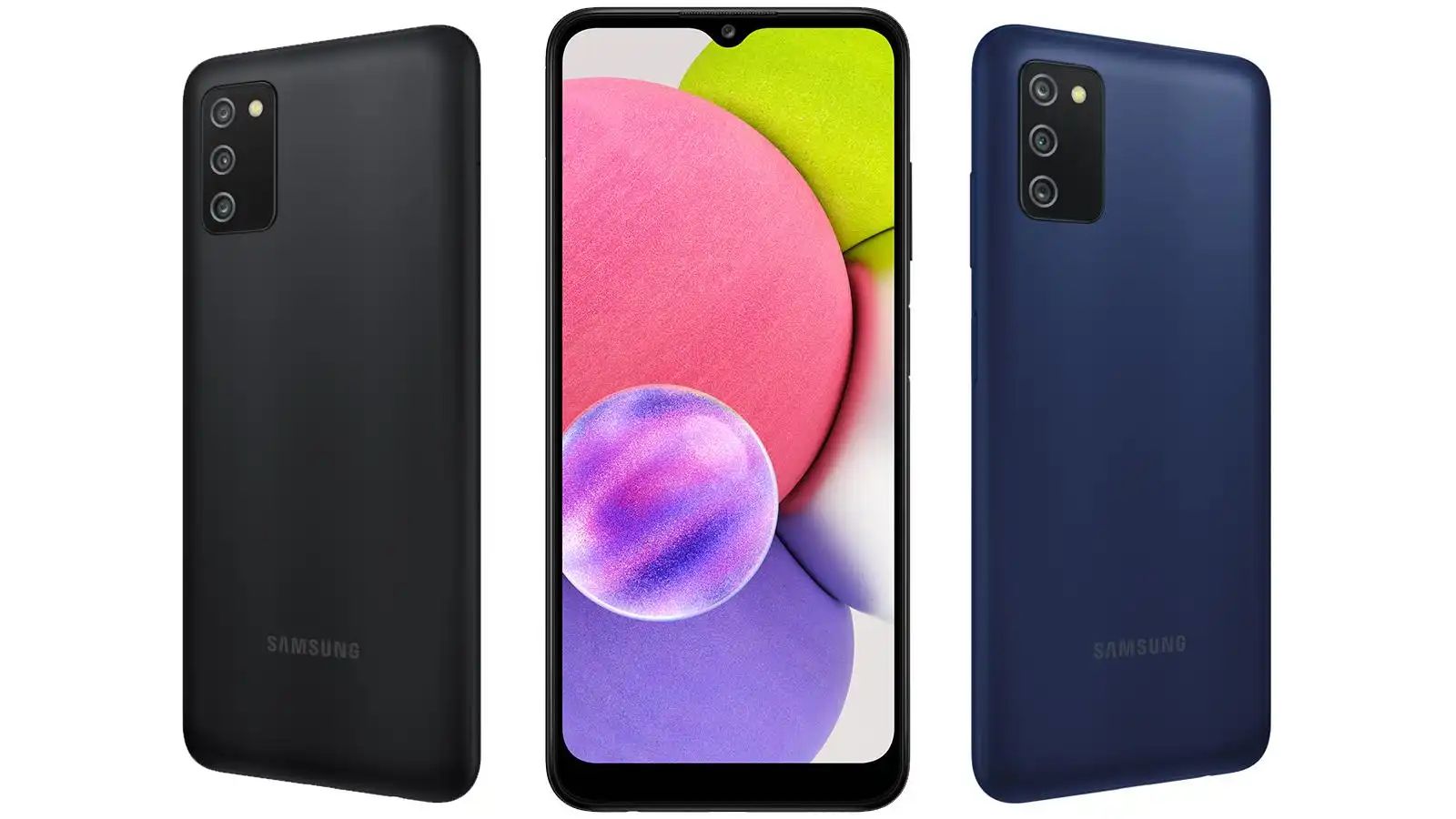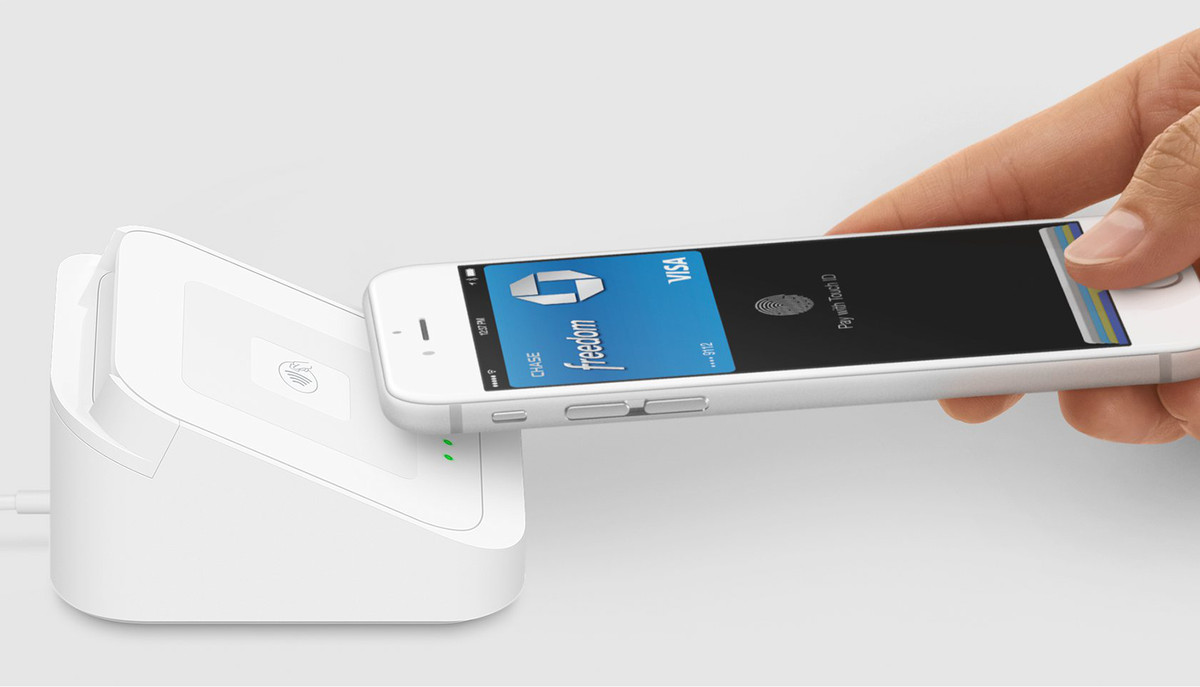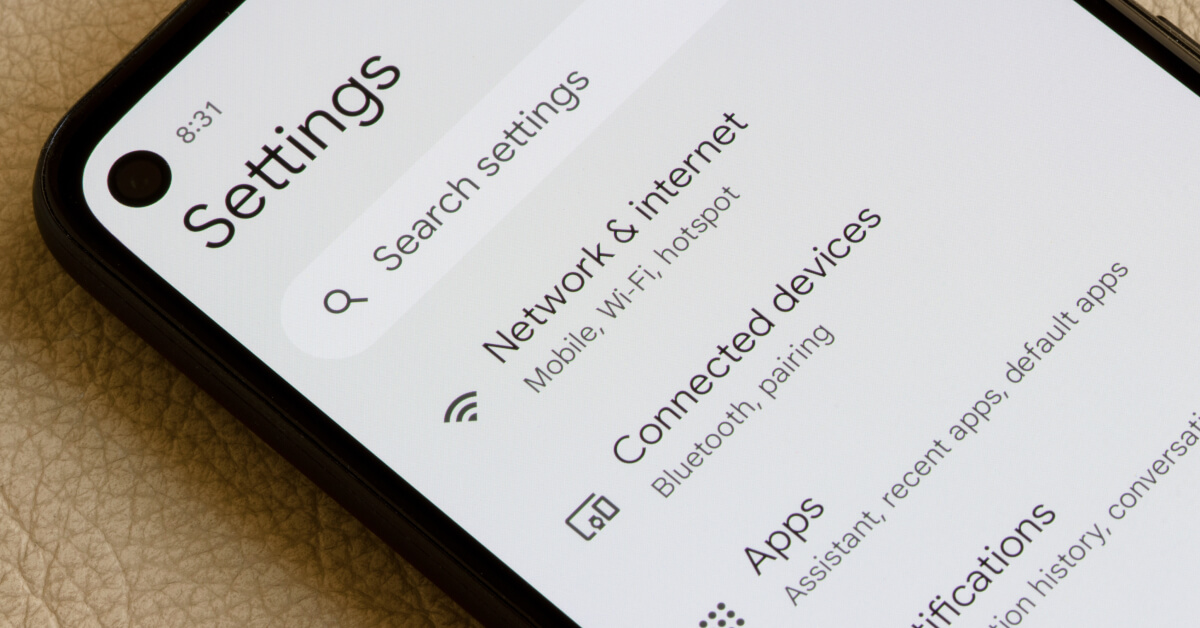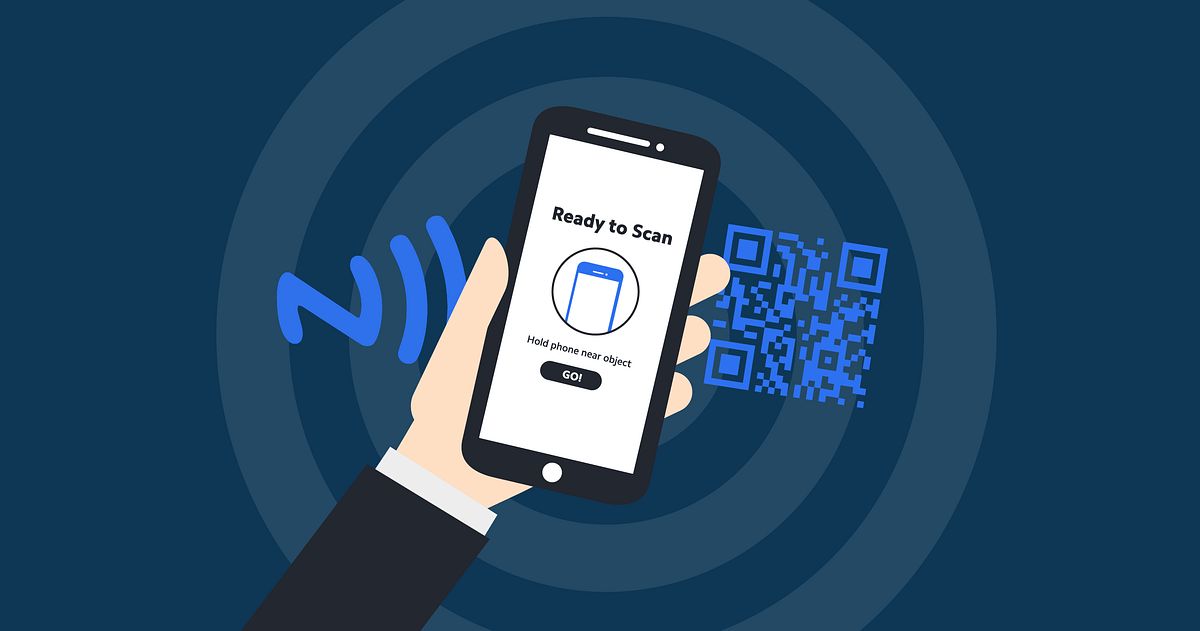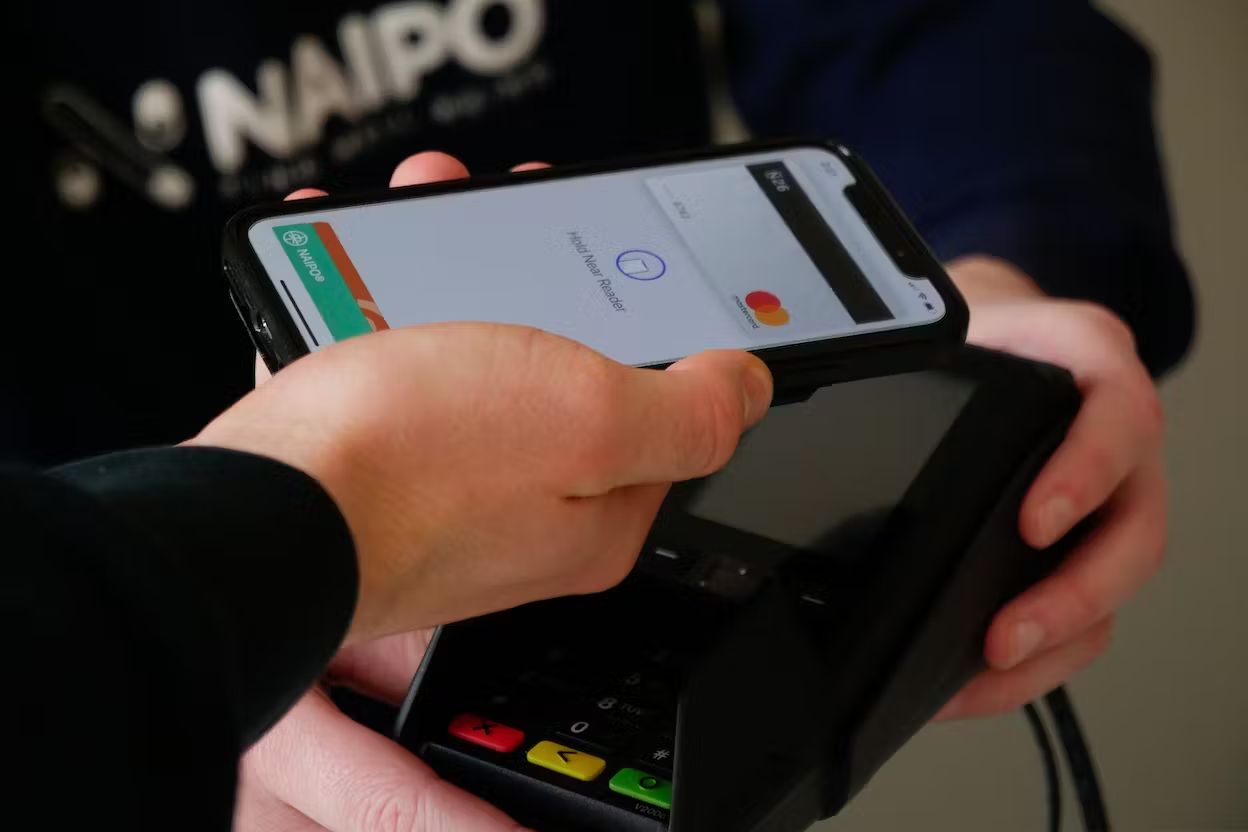Introduction
Welcome to the world of Near Field Communication (NFC) and its wonders on Android devices! In this increasingly interconnected era, NFC has become a vital technology that enables seamless communication and brings convenience to our lives. Whether you realize it or not, NFC plays a crucial role in various aspects of our daily routines, from making contactless payments to sharing files and accessing digital content.
NFC, as the name suggests, allows devices to communicate with each other when they are in close proximity (within a few centimeters). By simply tapping or bringing two NFC-enabled devices together, they can exchange information and execute commands quickly and securely.
Android devices have embraced NFC technology, making it a standard feature on many smartphones and tablets. This widespread adoption has unlocked a world of possibilities, allowing Android users to leverage NFC for a multitude of tasks.
In this article, we will explore the functionalities of NFC on Android devices and delve into the plethora of ways it enhances our everyday lives. Whether you are a tech-savvy enthusiast or someone who is just discovering the potential of NFC, this article will provide a comprehensive overview of how NFC works and the exciting applications it offers.
So, if you are ready to embark on a journey of innovation and convenience, join us as we unravel the mysteries of NFC technology on Android devices. Let’s dive in and discover the incredible things NFC can do for us!
What is NFC?
Near Field Communication, commonly known as NFC, is a short-range wireless communication technology that allows devices to exchange data when they are in close proximity to each other. NFC operates on the principle of electromagnetic induction, where devices use radio waves to establish a connection and transfer information.
NFC-enabled devices, such as smartphones, tablets, and other smart devices, have a small NFC chip embedded in them. This chip acts as both a reader and a transmitter, allowing devices to communicate with each other. By simply bringing two NFC-enabled devices close together, they can establish a connection and exchange data seamlessly.
Unlike other wireless technologies like Bluetooth or Wi-Fi, NFC has a limited range of approximately 4 cm (1.5 inches), which ensures that the communication is secure and reliable. This close proximity requirement also adds an additional layer of security, making it ideal for contactless payment systems and authentication processes.
NFC operates in two modes: active and passive. In passive mode, one device has an NFC tag embedded in it, which contains information like text, URLs, or commands. When another NFC-enabled device comes close to the NFC tag, it can read and interact with the information stored on the tag. This mode is commonly used in applications like contactless payments, access control systems, and transportation ticketing.
In active mode, both devices involved in the communication have NFC chips. They can initiate the communication, exchange data, and perform various operations. This mode is used in scenarios like sharing files, pairing Bluetooth devices, or connecting to other devices for media streaming.
Overall, NFC technology provides a quick, secure, and user-friendly way to exchange data between devices. Its simplicity and versatility have made it a valuable technology in various sectors, including mobile payments, transportation, healthcare, and many more.
In the next section, we will explore how NFC works and the underlying technology that makes it possible. So, buckle up and get ready to dive into the fascinating world of NFC on Android devices!
How Does NFC Work?
Near Field Communication (NFC) technology relies on the principles of electromagnetic induction to enable communication between devices. It operates at a high frequency of 13.56 MHz, allowing for secure and efficient data transfer between NFC-enabled devices.
NFC works through the use of two essential components: an NFC reader and an NFC tag or another NFC-enabled device. The NFC reader generates an electromagnetic field that the NFC tag or device can detect and respond to. This field activates the NFC tag, allowing it to transmit information back to the reader.
When two NFC-enabled devices are brought close together, they establish a connection by creating a magnetic field between them. This connection is temporary and is broken when the devices are no longer in close proximity.
One of the key advantages of NFC technology is its simplicity. Unlike other wireless communication technologies, NFC does not require complex setup processes or multiple steps for device pairing. It utilizes a touch-based interaction, enabling devices to communicate with a simple tap or close proximity.
NFC devices can operate in three different modes: reader/writer mode, card emulation mode, and peer-to-peer mode.
In reader/writer mode, an NFC-enabled device acts as the reader, sending a signal and retrieving data from an NFC tag. This mode is commonly used in applications such as contactless payments, access control systems, and ticketing.
In card emulation mode, an NFC-enabled device can emulate an NFC card, allowing it to interact with NFC readers. This mode is used for tasks like mobile payments, where the smartphone emulates a credit card, enabling users to make payments by tapping their device on an NFC-enabled payment terminal.
In peer-to-peer mode, two NFC-enabled devices can communicate with each other and exchange data. This mode is commonly used for tasks like file sharing, device pairing, and multimedia streaming.
In terms of security, NFC technology incorporates various layers of protection. One of the primary security features is the limited communication range of NFC, which ensures that devices need to be in close proximity to establish a connection. Additionally, NFC employs encryption algorithms to prevent unauthorized access and protect sensitive information during data transfer.
In the next section, we will explore the specific features and capabilities of NFC on Android devices. So, let’s dive deeper into the world of NFC on your Android device!
NFC on Android Devices
Android has embraced Near Field Communication (NFC) technology, making it a standard feature on many smartphones and tablets. Android devices offer a seamless and user-friendly NFC experience, allowing users to take advantage of the various functionalities NFC has to offer.
Android devices typically have an NFC chip integrated into their hardware, enabling them to interact with other NFC-enabled devices and tags. These devices also come equipped with the necessary software components to support NFC functionality, ensuring a smooth and reliable user experience.
One of the advantages of NFC on Android is its wide compatibility with various applications and services. The Android operating system provides extensive support for NFC technology, allowing developers to create innovative applications that leverage NFC capabilities.
Android devices offer a range of NFC-related settings that can be accessed through the device’s settings menu. Users can enable or disable NFC, manage NFC payment options, configure NFC tag reading and writing settings, and control other NFC-related features. These settings ensure that users have full control over their NFC experience and can customize it according to their preferences.
In addition to the built-in NFC settings, Android users can also access various NFC-related applications from the Google Play Store. These applications offer additional functionalities and features that utilize NFC technology. For example, there are apps for mobile payments, loyalty card management, NFC tag scanning, and more.
Android devices are also compatible with popular NFC-based payment systems, such as Google Pay. By storing credit card or payment information securely on the device, users can make seamless and convenient contactless payments by simply tapping their devices on NFC-enabled payment terminals.
Moreover, Android devices can read and write data to NFC tags. NFC tags are small, passive devices that store information and can be read by NFC-enabled devices. Users can program NFC tags to automate certain tasks, such as launching specific apps, toggling device settings, or displaying contact information. This feature, known as “Android Beam,” allows for quick and effortless interaction with NFC tags.
Android’s versatility extends beyond just NFC functionality. It integrates NFC with other technologies, such as Bluetooth and Wi-Fi, to enhance the user experience. For instance, Android devices can use NFC to initiate a Bluetooth pairing process, simplifying the process of connecting devices for media streaming or file sharing.
Android’s commitment to supporting NFC technology ensures that users have a seamless and convenient experience with their NFC-enabled devices. Whether it’s making payments, automating tasks, or accessing digital content, Android devices provide a robust platform for users to leverage the power of NFC.
In the next section, we will explore the diverse uses and applications of NFC on Android devices. So, let’s discover the exciting possibilities that NFC brings to the Android world!
Uses of NFC on Android
Near Field Communication (NFC) technology on Android devices offers a wide range of exciting and practical uses. From simplifying everyday tasks to enabling secure transactions, NFC has become an integral part of our daily lives. Let’s explore some of the key uses and applications of NFC on Android devices.
Sending and Receiving Data: One of the primary uses of NFC is to facilitate quick and seamless data transfer between devices. With the tap of an NFC-enabled Android device against another NFC-enabled device, users can instantly share contacts, photos, videos, and other files. This feature eliminates the need for cables or manual pairing and simplifies the process of transferring data between devices.
Making Payments with NFC: NFC technology has revolutionized the way we make payments. Android devices can act as digital wallets, allowing users to make contactless payments by simply tapping their devices against NFC-enabled payment terminals. Services like Google Pay and Samsung Pay securely store credit card and payment information, providing a convenient and secure method of making transactions without the need to carry physical cards.
Accessing Digital Content: NFC tags can be strategically placed in various locations to provide users with quick access to digital content. For example, museums and art galleries can use NFC tags to provide additional information about exhibits when visitors tap their smartphones against the tags. Similarly, NFC tags can be placed on smart posters, allowing users to access promotional content or download apps by tapping their devices against the tags.
Automating Tasks with NFC: Android users can automate various tasks using NFC tags. By programming NFC tags with specific actions or settings, users can create customized shortcuts. For instance, tapping an NFC tag placed near the bedside table can trigger a series of actions, such as enabling silent mode, setting an alarm, and launching a sleep sounds app. This automation capability simplifies routine tasks and enhances efficiency.
Pairing Bluetooth Devices: NFC technology streamlines the process of pairing Bluetooth devices. By tapping an NFC-enabled smartphone against an NFC-enabled Bluetooth device, such as headphones or speakers, users can quickly establish a Bluetooth connection without the need to manually search and pair devices. This feature makes it effortless to connect and enjoy wireless audio experiences.
Transportation Ticketing: NFC technology has been integrated into transportation systems in many cities around the world. Users can simply tap their NFC-enabled Android devices against NFC readers on buses, trains, or subway gates to pay for fares, eliminating the need for physical tickets or cards. This provides users with a convenient, contactless, and secure way to travel.
These are just a few examples of the myriad uses of NFC on Android devices. The versatility and flexibility of NFC make it an indispensable technology that enhances convenience, speeds up transactions, and simplifies daily tasks. With ongoing advancements in NFC technology, we can expect even more exciting applications and use cases in the future.
Now that we have explored the various uses of NFC on Android devices, let’s summarize our findings in the concluding section.
Sending and Receiving Data
One of the primary uses of Near Field Communication (NFC) technology on Android devices is the quick and seamless transfer of data between compatible devices. With the simple tap or close proximity of two NFC-enabled Android devices, users can easily share contacts, photos, videos, documents, and other files.
The process of sending and receiving data through NFC is incredibly convenient and straightforward. Android devices have built-in functionality that allows users to initiate the transfer of data by tapping their devices together. This gesture triggers the NFC communication, establishing a connection between the devices and enabling the transfer of information.
Unlike other traditional methods of data transfer, NFC eliminates the need for cables, Wi-Fi connections, or pairing processes. It offers a more intuitive and effortless way to share content between devices. This is particularly useful in situations where users need to quickly exchange information, such as transferring contact details after a business meeting or sharing photos with friends at a social gathering.
NFC-based data transfer on Android devices can be used for various purposes. Here are a few examples:
- Sharing Contacts: By tapping two NFC-enabled Android devices together, users can instantly share contact information saved on their devices. This eliminates the need to manually type or exchange business cards. It streamlines the process of exchanging contact details and ensures accuracy and timeliness.
- Transferring Files: NFC allows users to share files of various types, including photos, videos, audio files, and documents. Simply tapping two NFC-enabled Android devices together initiates the transfer. This feature is particularly useful for sharing media files with friends or colleagues on the go, without the need for an internet connection or additional equipment.
- Exchanging URLs and Links: NFC can be used to share website URLs, app links, or any other web-based content. By bringing the NFC-enabled Android device close to an NFC tag or another NFC-enabled device, users can access the information embedded in the tag or receive it from the other device. This allows for quick access to specific web content or promotional material.
It’s important to note that NFC data transfer on Android devices is not limited to a specific file format or app. It works with various file types and is compatible with a wide range of apps that support NFC functionality. This flexibility ensures that users can share and receive data seamlessly, regardless of the device or the app being used.
Furthermore, the security aspects of NFC data transfer are worth mentioning. NFC offers a secure and reliable method of data exchange. The close proximity required for NFC communication ensures that the risk of unauthorized access or data interception is minimized.
Sending and receiving data through NFC on Android devices provides users with a hassle-free, efficient, and secure means of sharing information. With just a tap, users can instantly exchange contacts, transfer files, and access web content, enhancing the overall user experience and streamlining communication.
Now that we have explored the sending and receiving of data through NFC, let’s move on to the next section, which focuses on making payments with NFC on Android devices.
Making Payments with NFC
One of the game-changing applications of Near Field Communication (NFC) technology on Android devices is its integration with mobile payment systems. With the rise of digital wallets and contactless payments, Android users can now make secure and convenient payments using their NFC-enabled devices.
NFC technology allows Android devices to act as digital wallets, enabling users to make contactless payments with just a simple tap. Services like Google Pay, Samsung Pay, and other banking and payment apps make it possible to securely store credit card and payment information on the device. This eliminates the need to carry physical cards and allows for a streamlined payment experience.
To make a payment using NFC on an Android device, users need to ensure that NFC is enabled on their device. Typically, this can be done through the device’s settings, where users can activate NFC functionality. Once NFC is enabled, users can simply place their device near an NFC-enabled payment terminal and authenticate the transaction, usually by using their device’s biometric authentication (such as a fingerprint or facial recognition) or a PIN code.
When making a payment with NFC, the transaction details are securely transmitted between the NFC-enabled Android device and the payment terminal. This communication happens within a very limited range of a few centimeters, which ensures the security of the transaction by minimizing the risk of interception or unauthorized access.
NFC-enabled mobile payment services offer several benefits over traditional payment methods:
- Convenience: NFC payments eliminate the need to carry around multiple credit or debit cards. Users can store their payment information securely on their Android device and make payments with just a tap, saving time and simplifying the checkout process.
- Security: Mobile payments via NFC offer enhanced security features. The use of tokenization technology ensures that sensitive payment data is not stored or transmitted during the transaction. Device-level security features, such as biometric authentication, add an extra layer of protection.
- Wide Acceptance: NFC payment technology is widely accepted at various merchants, including retail stores, restaurants, transportation services, and more. NFC-enabled payment terminals are becoming increasingly common, providing users with the convenience of contactless payments in their everyday lives.
- Transaction History and Management: Mobile payment apps associated with NFC enable users to keep track of their transactions, view purchase history, and manage their payment methods. This allows for better financial management and easy access to transaction information if needed.
As NFC technology continues to develop and gain prominence, mobile payments through NFC on Android devices are becoming more prevalent. The simplicity, convenience, and security offered by NFC-enabled mobile payment systems have transformed the way we make transactions, making cashless payments faster, more seamless, and secure.
Now that we have explored the exciting world of NFC mobile payments, let’s move on to the next section, which focuses on accessing digital content using NFC on Android devices.
Accessing Digital Content
Near Field Communication (NFC) technology on Android devices not only enables quick data transfer and mobile payments but also provides a convenient way to access digital content in various contexts. By utilizing NFC tags or interacting with other NFC-enabled devices, users can access a wealth of information and digital experiences with just a tap or close proximity.
One of the common applications of NFC in accessing digital content is in museums, galleries, and exhibitions. NFC tags can be placed near exhibits, artworks, or artifacts to provide visitors with additional information and interactive experiences. By tapping their NFC-enabled Android devices against these tags, users can access details about the artwork, artist biographies, audio guides, or related multimedia content. This enhances the overall visitor experience, providing a more engaging and educational interaction with the exhibits.
NFC also plays a role in accessing promotional or marketing content. Smart posters and advertisements embedded with NFC tags are increasingly used in various settings. For example, tapping an NFC-enabled Android device against a smart poster in a train station can provide users with details about upcoming events, special offers, or even download links for related apps. This interactive approach allows users to conveniently access relevant digital content and engage with promotional materials.
Additionally, NFC can be utilized to grant access to restricted digital content or services. For instance, hotels or shared office spaces can use NFC-enabled access cards or badges to provide authorized users with entry to specific areas or facilities by tapping their Android device against an NFC reader. This provides a seamless and convenient access control solution.
Another exciting use of NFC in accessing digital content is the integration with loyalty programs and rewards. Many businesses and retailers offer NFC-enabled loyalty cards or tags that users can tap with their Android device to earn points or redeem rewards. This eliminates the need to carry physical loyalty cards and simplifies the process of earning and tracking rewards.
Beyond museums, promotions, access control, and loyalty programs, the potential uses of NFC for accessing digital content are vast. It can be applied in educational settings, healthcare systems, public transportation, and various industries where the seamless and secure transfer of digital information is essential.
Android devices equipped with NFC technology make accessing digital content more convenient, interactive, and personalized. By leveraging NFC-enabled tags or interacting with other NFC-enabled devices, users can unlock a world of information and experiences with a simple tap or touch. The possibilities for access to digital content through NFC on Android devices continue to expand, allowing for enhanced engagement and convenience in our increasingly digital world.
With the exploration of accessing digital content using NFC, we will now move on to the next section, which focuses on the automation of tasks with NFC on Android devices.
Automating Tasks with NFC
Near Field Communication (NFC) technology on Android devices offers a powerful feature that allows users to automate tasks through the use of NFC tags. By programming specific actions or settings onto NFC tags and tapping their Android devices against them, users can execute a series of actions or set their device to certain configurations with just a simple touch.
The process of automating tasks with NFC begins with setting up the desired actions on an NFC tag. Android devices provide built-in functionality or third-party apps that allow users to assign various commands or settings to specific NFC tags. These commands can include launching applications, toggling device settings, sending pre-written messages, and more. Once the NFC tag is programmed, users can trigger the associated actions by tapping their Android device against the tag.
The automation possibilities with NFC are virtually limitless. Here are a few examples of tasks that can be automated using NFC on Android devices:
- Changing Device Settings: NFC tags can be used to modify device settings with a single tap. For instance, tapping an NFC tag placed on a car dashboard can toggle on Bluetooth, launch a navigation app, and adjust the volume settings, making the process of getting ready for a drive seamless and convenient.
- Launching Apps: NFC tags can trigger the launch of specific applications on an Android device. For instance, tapping an NFC tag placed on a bedside table can open a sleep sounds app, dim the screen brightness, and set an alarm for the next morning, all in one touch.
- Sharing WiFi Credentials: NFC can simplify the process of sharing WiFi credentials with friends or guests. By tapping an NFC tag, Android devices can automatically connect to a predefined WiFi network, eliminating the need to manually enter the network name and password.
- Switching Profiles: NFC tags can be programmed to change the device profile based on the user’s needs or location. For example, tapping an NFC tag on a desk at work can switch the device to silent mode, disable certain notifications, and adjust other settings to create a distraction-free work environment.
Automating tasks with NFC provides users with a convenient and efficient way to streamline their daily routines. By eliminating manual steps and customizing their device to perform specific actions through NFC tags, users can save time and effort, enhancing productivity and overall user experience.
Moreover, NFC automation is not limited to a single device. Users can program NFC tags to interact with other NFC-enabled devices. For example, tapping an NFC-enabled smartphone against an NFC-enabled Bluetooth speaker or TV can automatically establish a connection and start playing music or stream media content.
With the growing popularity and integration of NFC technology, the automation of tasks through NFC is becoming increasingly prevalent. New applications and innovative use cases continue to emerge, transforming how we interact with our Android devices and simplifying our daily lives.
Now that we have explored the automation of tasks with NFC, let’s move on to the next section, where we will summarize our findings and conclude our journey through the world of NFC on Android devices.
Conclusion
Near Field Communication (NFC) technology has revolutionized the way we interact with our Android devices. It offers a wide array of functionalities that enhance our everyday lives, from sending and receiving data to making secure mobile payments and accessing digital content. NFC has become an integral part of our digital experience, providing convenience, efficiency, and seamless connectivity.
On Android devices, NFC is not merely a feature but a gateway to a whole new world of possibilities. Users can tap their devices to share contacts, files, and URLs seamlessly. With mobile payment services like Google Pay, NFC has transformed the way we make transactions, making contactless payments faster, more secure, and more convenient than ever before.
The ability to access digital content through NFC has made museums, exhibitions, promotions, and loyalty programs more interactive and engaging. Users can simply tap their Android devices on NFC tags to access additional information, multimedia content, and exclusive offers.
Furthermore, the automation of tasks with NFC has simplified our daily routines by enabling one-touch executions of predefined actions. From changing device settings to launching apps and switching profiles, NFC tags provide a convenient way to customize our devices and streamline our tasks.
Android devices have embraced NFC technology and made it readily accessible to users. With the widespread adoption of NFC and continued advancements in the field, we can anticipate even more innovative applications and use cases in the future.
In conclusion, NFC technology on Android devices has made our lives more connected, convenient, and secure. It has transformed the way we share, pay, access content, and automate tasks. From sending files to making payments, from accessing information to streamlining our routines, NFC on Android devices continues to revolutionize the way we interact with technology. The potential of NFC technology is vast, and we can only imagine the possibilities that lie ahead as it continues to evolve and enhance our digital experiences.







